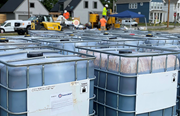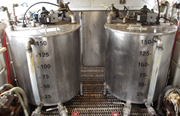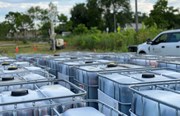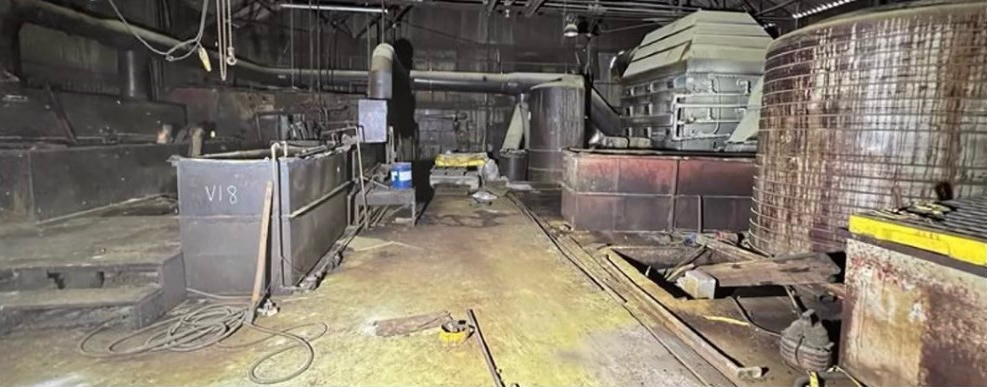The Challenges of Benzene and TPH Remediation By Chemical Oxidation
By: Eliot CooperAt the beginning of an underground storage tank (UST) project, most consultants focus the design on benzene, toluene, ethylbenzene, and xylene (BTEX) concentrations in the groundwater and soil—but what about total petroleum hydrocarbons (TPH)? It’s easy to say that if there are no specific state requirements regarding TPH, our only concern should be BTEX in groundwater and we usually assume BTEX will primarily exist in the dissolved phase.
However, even though TPH levels are not regulated in every state, it would be unwise to overlook their presence on your project site, as they can impact the efficacy of your remedy. In this blog post, I’ll explain what you need to consider before designing your UST remediation approach.
While contaminant concentrations in groundwater are easy to assess with traditional sampling technologies, such as monitoring wells and direct push sampling, the amount sorbed to soil can be more challenging to evaluate. When working on chlorinated solvents sites, since TCE and PCE have measured KOC (geomean) values of 94.3 and 265 respectively, we generally are concerned with soil mass. However, BTEX ranges from 61.7 to 311, so it will also sorb to soil, depending on soil fractional organic carbon (FOC) content, and needs to be factored into remedial approaches and dosing of chemistries when in situ injection approaches are used.

Source: https://semspub.epa.gov/work/HQ/175223.pdf
TPH are also a component of gasoline or diesel that contributes to the overall contaminant concentrations in groundwater and soil. They must be factored into the remedial design, whether the state requires it or not, since they will consume oxidants. TPH are not preferential in what contaminant they oxidize, except that they can only oxidize contaminants in the dissolved phase. To treat sorbed mass, back diffusion to recreate equilibrium conditions is required. And as can be seen from the following table, TPH have higher log KOC than BTEX.
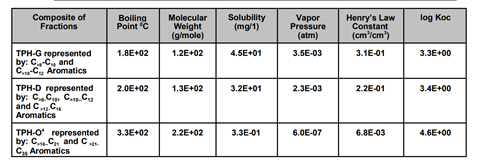
Source: https://www.epa.state.oh.us/portals/30/rules/DI-033.pdf
As a result, when dosing a UST site for chemical oxidation, the total oxidant demand will be based on total contaminants, including BTEX and TPH. If methyl tertiary butyl ether (MTBE) and tertiary butyl alcohol (TBA) are present, they must be considered as well, even if not regulated, because they will consume oxidants. However, for these latter two contaminants, one can focus primarily on the dissolved phase due to their affinity to remain in water.
Chemical Oxidation Dosing
There are multiple inputs that go into chemical oxidation design. LNAPL is typically removed before implementing chemical oxidation at UST sites, so the focus can be on treatment of contaminant sorbed mass in soil and dissolved mass in groundwater. Scavenging reactions, like soil oxidant demand (SOD), also should be considered, since native soils are also oxidized during the remediation process.
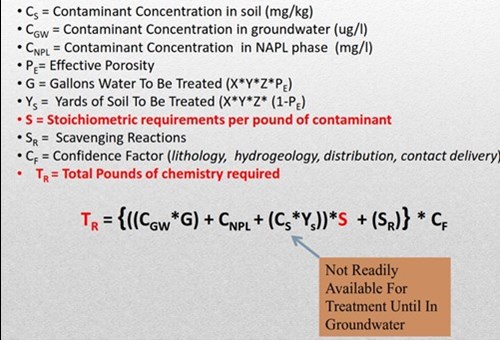
Chemical Oxidation Stoichiometry
While amendments like ozone, catalyzed hydrogen peroxide, and activated persulfate are commonly used for chemical oxidation, and the stoichiometry for contaminants is known, the majority of treatment occurs through radical production and not the base chemistries. While dosing based on radical generation is not well understood, dosing factors 20-45 pounds of oxidant per pound of petroleum contaminant to be used for the total mass of injected oxidants. This dose is then typically increased based on SOD demand and by a safety or confidence factor to determine the actual, final dosage.
Example Chemical Oxidation Site
Sometimes it’s easier to understand these concepts by seeing them laid out. The following site provides an example of dosing.

Based on this dosing and the persistence of the oxidant, a percentage of the total oxidant is injected per event to account for the slow back diffusion of contaminants sorbed to soil. Injecting all the oxidant during one event, even if possible, would only result in overdosing the dissolved phase and wasting a good portion of the oxidant.
Design Considerations to Overcome High TPH
Obviously, the oxidant cost for treatment, at $1,763 per cubic yard, is cost prohibitive. But there are assumptions made in dosing that could lower this cost—but only if benzene is the target contaminant and TPH is not regulated.
- The BTEX components in the dissolved phase will be preferentially treated and therefore the TPH mass in soil and groundwater can be partially ignored.
- TPH will be slow to back diffuse from soil and, based on benzene groundwater monitoring requirements post remediation, may not be a factor in achieving closure.
- TPH is considered more difficult to fully oxidize and is generally broken down to intermediates. However, states that regulate tentatively identifiable compounds (TICs) account for this and makes it difficult to assume complete oxidation of TPH is not required.
Converting these assumptions to overall oxidant dosing for successful remediation has not been well documented in case studies.
Conclusions
When planning your treatment of UST sites, you cannot underestimate or overlook the impact of TPH, even if you are not specifically required to treat them. In situ remediation of high TPH sites by chemical oxidation poses unique dosing challenges and can prohibit cost effectively achieving MCLs for benzene. If TPH and TICs are also regulated, then chemical oxidant costs will be more prohibitive based on the TPH in groundwater and sorbed to soil.
ABOUT THE AUTHOR

Eliot Cooper
Vice President, Technology
[email protected]
Eliot Cooper is the Vice President of Technology and Business Development. In this role, he helps clients design efficient and cost-effective remedies using high resolution site characterization (HRSC) and a vast array of remediation options. His specialty is finding the right combination of tools and technologies for complex sites, and ensuring every step of the remediation process is optimized to achieve results.
Eliot draws on a career that spans more than 30 years in the environmental remediation industry and includes hundreds of projects nationwide. He’s remediated sites that involved hex chrome, fuel spills, and chlorinated solvents. He specializes in injected remedy delivery, remediation design support, characterization of VOCs, and tackling complex sites by combining multiple remediation technologies.
Eliot previously served at the Environmental Protection Agency in both air pollution and hazardous waste management programs, as well as in the private sector providing thermal combustion and in situ remediation field services. Eliot now leads Cascade's in situ remediation solutions team to evaluate available technologies to meet client goals, provide advanced delivery techniques, and ensure HRSC results in actionable solutions.



